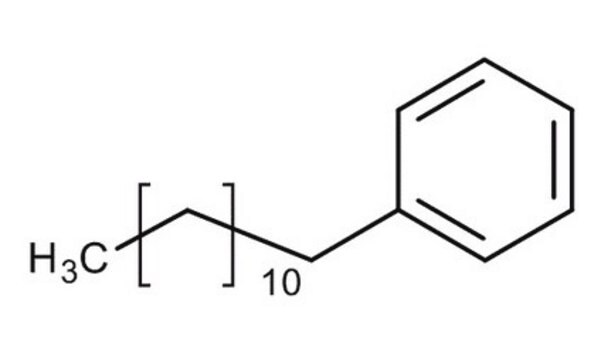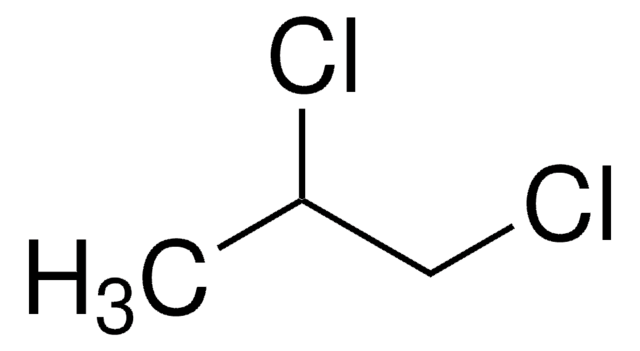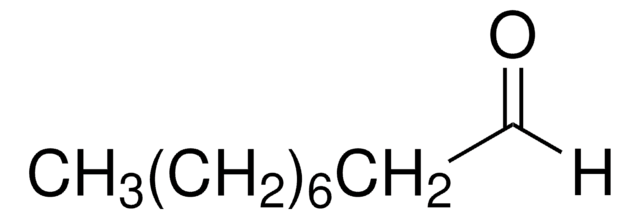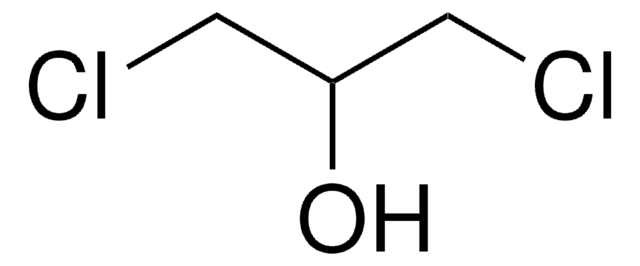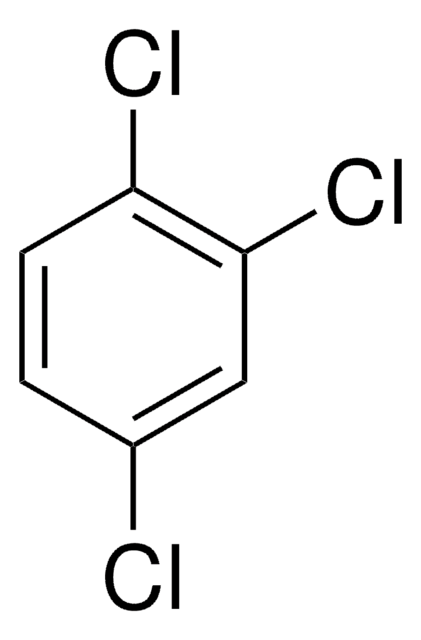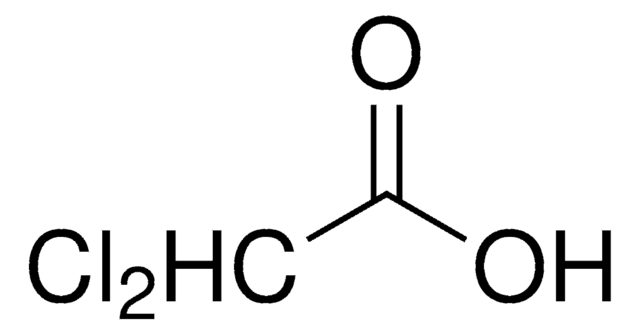Kluczowe dokumenty
47794
1,2,3-Trichloropropane
analytical standard
Synonim(y):
Glycerol trichlorohydrin, Trichlorohydrin
About This Item
Polecane produkty
klasa czystości
analytical standard
Certyfikat analizy
current certificate can be downloaded
opakowanie
ampule of 1000 mg
metody
HPLC: suitable
gas chromatography (GC): suitable
współczynnik refrakcji
n20/D 1.484 (lit.)
bp
156 °C (lit.)
mp
−14 °C (lit.)
gęstość
1.387 g/mL at 25 °C (lit.)
Zastosowanie
cleaning products
cosmetics
environmental
food and beverages
personal care
Format
neat
temp. przechowywania
2-30°C
ciąg SMILES
ClCC(Cl)CCl
InChI
1S/C3H5Cl3/c4-1-3(6)2-5/h3H,1-2H2
Klucz InChI
CFXQEHVMCRXUSD-UHFFFAOYSA-N
Szukasz podobnych produktów? Odwiedź Przewodnik dotyczący porównywania produktów
Zastosowanie
Hasło ostrzegawcze
Danger
Zwroty wskazujące rodzaj zagrożenia
Zwroty wskazujące środki ostrożności
Klasyfikacja zagrożeń
Acute Tox. 3 Dermal - Acute Tox. 3 Inhalation - Acute Tox. 3 Oral - Aquatic Chronic 3 - Carc. 1B - Eye Irrit. 2 - Muta. 2 - Repr. 1B - STOT RE 1 Inhalation
Organy docelowe
Kidney,Liver,Mucous membranes
Kod klasy składowania
6.1C - Combustible acute toxic Cat.3 / toxic compounds or compounds which causing chronic effects
Klasa zagrożenia wodnego (WGK)
WGK 3
Temperatura zapłonu (°F)
165.2 °F - DIN 51758
Temperatura zapłonu (°C)
74 °C - DIN 51758
Środki ochrony indywidualnej
Eyeshields, Faceshields, Gloves, type ABEK (EN14387) respirator filter
Wykazy regulacyjne
Wykazy regulacyjne dotyczą głównie produktów chemicznych. Można w nich podawać ograniczoną liczbę informacji na temat produktów niechemicznych. Brak wpisu oznacza, że żaden ze składników nie znajduje się w wykazie. Użytkownik odpowiada za zagwarantowanie bezpiecznego i zgodnego z prawem stosowania produktu.
EU REACH SVHC Candidate List
EU REACH Annex XVII (Restriction List)
Wybierz jedną z najnowszych wersji:
Masz już ten produkt?
Dokumenty związane z niedawno zakupionymi produktami zostały zamieszczone w Bibliotece dokumentów.
Klienci oglądali również te produkty
Protokoły
US EPA Method 8260: GC Analysis of Volatiles on SPB®-624 after Purge & Trap using "K" Trap, Fast GC Analysis
Nasz zespół naukowców ma doświadczenie we wszystkich obszarach badań, w tym w naukach przyrodniczych, materiałoznawstwie, syntezie chemicznej, chromatografii, analityce i wielu innych dziedzinach.
Skontaktuj się z zespołem ds. pomocy technicznej






